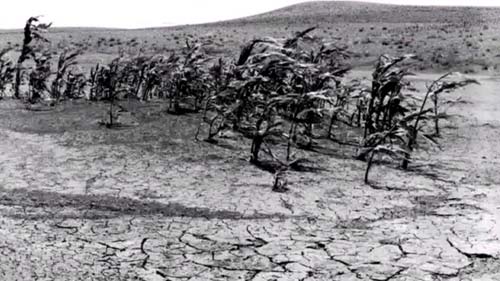drought

The Dust Bowl was the greatest man-made ecological disaster in the history of the United States. It encompassed a region 150,000 square miles long, across Oklahoma, the Texas Panhandles, and parts of Colorado, Kansas, and New Mexico.
A drought is a condition that occurs when evaporation and transpiration exceed precipitation for long periods. Four kinds of drought are recognized: permanent, typical of desert and semi-arid regions; seasonal, in climates with well-defined dry and rainy seasons; unpredictable, an abnormal failure of expected rainfall; and invisible, when even frequent showers do not restore sufficient moisture.
The Dust Bowl
The Dust Bowl was an area of some 400,000 km2 in the Southern Great Plains region of the US which, during the 1930s, the Depression years, suffered violent dust storms owing to accelerated soil erosion. Grassland was plowed up in the 1910s and 1920s to plant wheat: a severe drought bared the fields, and high winds blew the topsoil into huge dunes. Despite rehabilitation programs, farmers plowed up grassland again in the 1940s and 1950s, and a repetition of the tragedy was averted only by the action of Congress.


